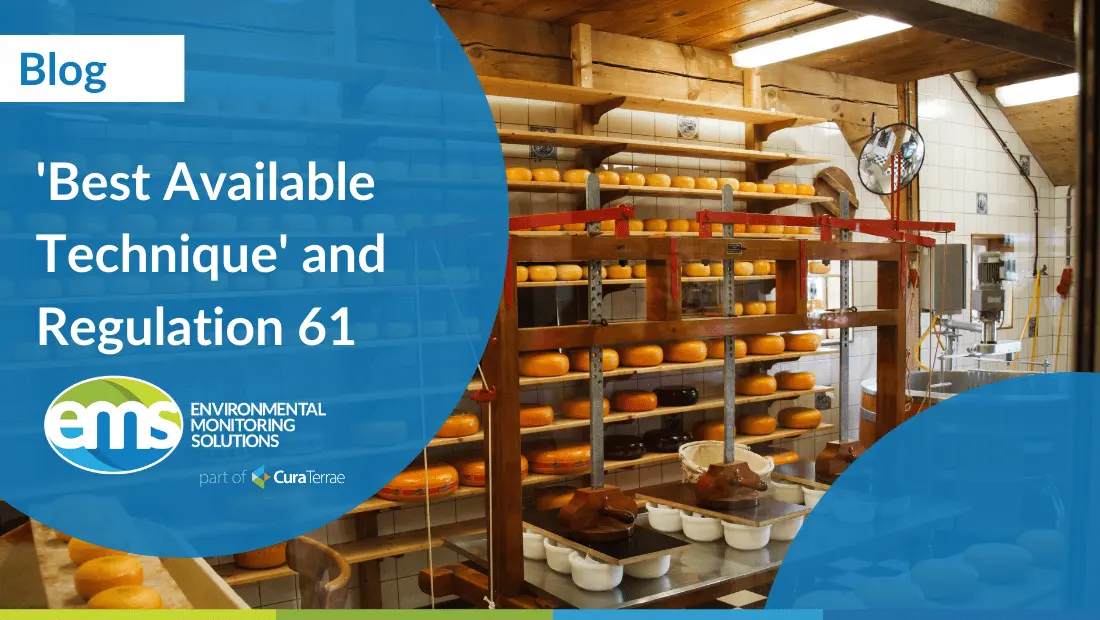Best Available Technique (BAT) and Regulation 61
30 March 2022

If you have an environmental permit you may have been asked to provide the EA with information regarding ‘BAT’ (Best Available Technique). In this piece we explain BAT, how it ties in with your permit, and your legal obligations under Regulation 61 of the Environmental Permitting (England and Wales) Regulations 2016.
What does BAT mean?
BAT stands for ‘Best Available Techniques’, referring to the techniques that best prevent or minimise environmental impacts from your industry processes/installations. These will be the most economically and technically viable options. ‘Techniques’ refers to the technology used, but also the way the installation is designed, built, maintained, and operated.
The ‘Best Available Techniques’ for an installation will come from the European BRef (best available technique reference) documents. The European Commission produces these best available technique reference documents, or ‘BRef’ notes. These are the result of investigative work, resulting from exchanges of information among regulators, industry, and environmental non-governmental organisations.
You will need to use BAT if you have an Installation Environmental Permit with the EA.
The European Commission updates these BRef notes and the updated versions will include ‘BAT conclusion documents’. These BAT conclusion documents contain emission limits, called BAT AELs. These are the emission levels associated with the best available techniques for emissions to air and water.
You must comply with these AELs with unless the Environment Agency agrees you’ve met certain criteria.
Different Bref documents exist for different industry sectors. For example, there’s a BRef for the food and drink industry which contains BAT for water consumption and waste water discharge, and a BRef for the textiles industry which contains BAT for selecting materials for textile manufacture.
European Commission BRef and BAT documents continue to apply in UK law after the EU Withdrawal Act 2018.
BAT in your Permit
Your permit conditions may tell you what BAT you must use or they may set emission limit values (ELVs) or other environmental limits or outcomes.
If your permit says you must follow BAT or ‘appropriate measures’ to achieve an outcome or ELV, check the relevant Bref guidance for your activity, to review the BAT for that process.
You may have to decide which BAT to use if your permit does not tell you. You may also need to take additional measures to meet the conditions in your permit. Remember: If you are adhering to your permit, it is very likely that you already are following Best Available Technique.
The Environment Agency may be required to review your permit if the BRef documents are updated.
A change in EA permitting regulations may result in a review of BAT. You may be issued a Notice under Regulation 61.
What is Regulation 61?
UK Environmental Regulators are required under the IED to review conditions in environmental permits, to ensure they deliver compliance with standards such as updated BRef and BAT Conclusions. This must be within four years of the publication of updated decisions.
In England and Wales this is accomplished by issuing a Notice under Regulation 61(1) of the Environmental Permitting (England and Wales) Regulations 2016. The EA will request that the operator provide information to demonstrate how the operation of their installation currently meets or will meet revised standards. Failure to comply with a Regulation 61(1) notice may include a warning, a formal caution, or prosecution.
BAT and your Permit Application
In order to have a permit you must demonstrate how and when BAT will be achieved. When you apply for an environmental permit you must state whether you’re going to follow each BAT that applies to your activity, or propose an alternative.
If you propose an alternative you must prove that it is equal to or better than the Best Available Technique. You need to do this in the ‘operating techniques’ section of the application form. This is called a ‘derogation’.
You must provide justification which may involve providing an operational plan, supplementary evidence like certificates, a summary, and sample documents.
BAT assessments are always part of a new permit application or variation, for example, if you add a stack to your business operations you will need to update your permit and therefore BAT information. If you are audited against your permit you may need to show that you are adhering to the best available techniques.









